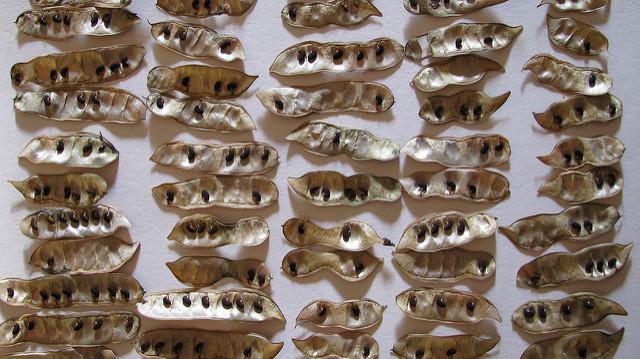
The Beat
When gun research is silenced
Gun science silence is a tongue-twister, but that’s no reason to keep quiet about it, Harvard Professor David Hemenway argues in Nature. While Research on gun-related violence can help support fact-based policy, there’s not a lot of it happening.
Shepherding the science through the intersecting vested interests and lobbies in the US is tricky at the best of times. As the anti-science voice grows louder, and as politicians double down on the gun lobby, it’ll be crucial to ensure that there’s enough data to support sensible policy. But those who study public health threats at the US Centers for Disease Control and Prevention are kept on a tight government-funded leash, which doesn’t extend to research on firearm injury. Despite some hopeful progress, however, it’s by no means a new call to arms.
Mass incarceration in rural America
And rounding out the reading, the Vera Institute of Justice brings us ‘Out of Sight’—a multi-form data–driven report focusing on the growth of jails in rural America (PDF). The research stems from the Institute’s visualisation tool, Incarceration Trends, and yields two overriding concerns: first, amid a national uptrend, rural counties have the highest number of pretrial detentions, and second, especially in the South and West, an increasing number of rural jail beds are rented out to other penitentiary authorities. Wired has some punchy commentary from the report’s authors, and touches on some of the economic incentives that are propelling the changes.
CT Scan
Busy week for Australian CT efforts
In an effort to prevent those convicted of terrorism offences from spreading extremist views, the NSW government has announced plans to build a new supermax high-security unit at Goulburn jail. The plan quickly came under fire from experts who argued that total isolation of so-called radical inmates would be counterproductive as it would ‘remove any chance of rehabilitation’ and would ‘create fertile ground for militancy’. The announcement came following a decision to allow NSW police ‘greater shooting powers’ to fight terrorism, a key recommendation of the Lindt Café siege inquest. The legislation would remove the weight from police officers alone to make the decision to use deadly force by allowing commanders to order pre-emptive strikes.
Meanwhile the Queensland government revealed plans for a $47 million CT training centre, as well as additional police recruits, to combat the threat of terrorism. The centre itself will include life-like civilian streets for scenario exercises, while training will focus on intelligence gathering and developing greater understanding of deradicalisation.
PM Malcolm Turnbull echoed this increase in CT efforts in a recent National Security Statement—calling for stronger cooperation from the big social media and messaging platforms.
Delving into the mind of a terrorist
This week’s recommended reading is this eye-opening piece from The Financial Times, which uses scientific evidence to ‘challenge assumptions of madness and theories of radicalisation’. The article refers specifically to a special issue of American Psychologist, released in April 2017, which was the result of four decades of research into terrorism and radicalisation. Among other things, the research challenges the notion that acts of terror are preceded by radical thought, or that terrorists share a common psychological profile.
Checkpoint
Trump’s border deterrence: it’s all in your mind
Data has revealed that the US Border Patrol has made significantly fewer arrests for illegal crossings this year than in preceding years. There were 19,967 arrests in May —35,475 fewer than in May 2016, and April’s figures this year were the lowest in five years (15,780). The chief of the El Paso section attributes the drop in numbers to the perceived end of the ‘catch and release’ program, which saw arrested illegal migrants being released into the US—often for years—while they awaited trial. Despite the Department of Homeland Security Secretary saying in April that the program had ended, there has actually been no official legislative change to the policy. Ending ‘catch and release’ had been one of Trump’s election promises, but the El Paso border chief believes POTUS has already succeeded in creating a ‘mindset of deterrence’.
Ivory smuggling bust
Seven key members of an ivory smuggling syndicate operating from Africa to Asia have been busted by the African cross-border Lusaka Agreement Task Force. The initiative released the results of its six-week operation in Nairobi last Friday, in which it cooperated with Southeast Asia law enforcement. Operating since 1992, the task force targets wild flora and fauna contrabands, and comprises eight Eastern and Southern African states. The investigation will now seek to identify and arrest the big sources of demand for ivory in Asia.
First Responder
Monsoon brings disaster
Heavy monsoonal rains have triggered flooding and landslides in Bangladesh, killing 134 people. The highest death toll (98) was in Rangamati district, including four soldiers taking part in the rescue operation. Landslides are common during the monsoon season, exacerbated by deforestation and ‘hill-cutting’. The government is facing heavy criticism from its citizens, who argue despite their regularity, authorities aren’t prepared to deal with disasters. The monsoon season has only just begun and there remains a risk of further emergencies: according to Plan International, nearly one-third of Bangladesh is usually underwater by the end of the season.
Impermanent frost
Since 2008, the Global Seed Vault has been buried inside a mountain in Norway’s Svalbard archipelago, holding nearly a million seed packets of vital food crop varieties. It was designed to survive without human intervention and was built to protect against ‘the challenge of natural or man-made disasters’. But, ironically, engineering decisions were based on the existence of permafrost (when the ground remains permanently frozen year to year)—which is exactly what didn’t happen after the recent extreme warm weather season. Instead, the existing permafrost melted and flooded the vault’s tunnel. Solutions now need to be found to endure a ‘wetter and warmer’ climate on Svalbard.